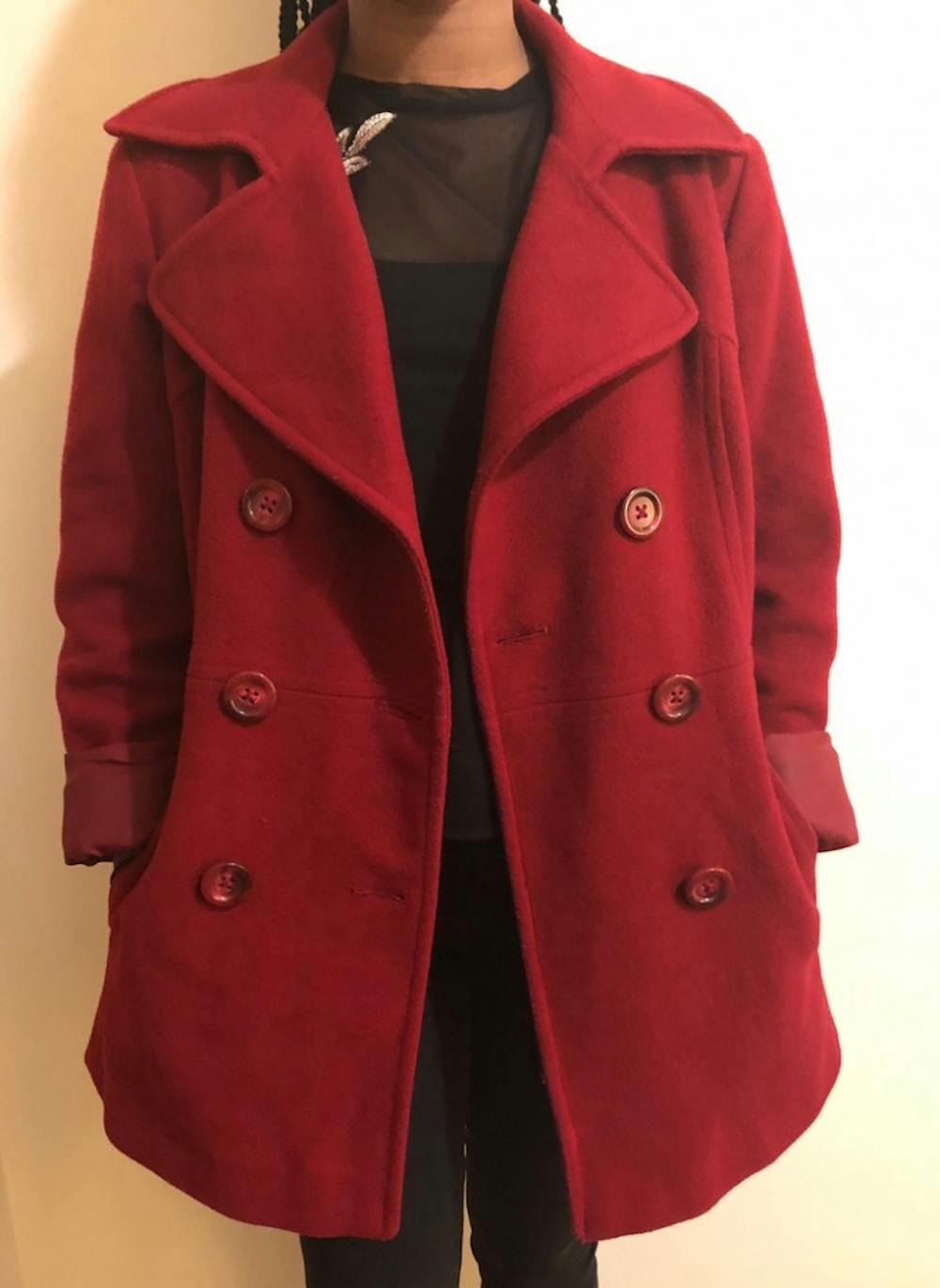This week, I am featuring one of my new favorite coats.
This cranberry red, wool peacoat is a great addition to my closet because it is perfect for the fall weather. The coat is made by London Fog and I only paid eight dollars for it at a Goodwill in Boston this past summer. If you’ve read a few editions of my column, then you would know I love bargain deals and saving money on clothes. Naturally, I was super excited when I came across this peacoat because it was so cheap and something that I knew would be super useful this season.
Thrifting is grossly underrated and something I wish more consumers took advantage of. Shopping at your local thrift store can help support local businesses or philanthropic organizations. Growing up, my mom always donated our family’s old clothes. I think we’ve always felt good knowing our slightly used items were being reused and repurposed to help people in our community. But I never realized how complicated the donation process actually was until recently.
Fast fashion is a popular retail practice in America. Fast fashion is clothing which is made cheaply and quickly in order to capture and sell the latest fashion trend. Ever notice how stores like Forever 21 are constantly turning over their inventory and unveiling new marketing campaigns? This is because they want to incentivize people to buy frequently in order stay on top of constantly changing fashion trends. The problem with this practice is that it leads to a lot of clothing waste. According to HuffPost, in 2013 alone, Americans produced 15.1 million tons of textile waste. This number has only grown over the past few years. Consumers spend so much money buying new clothes that in order to make themselves feel better about their purchases and make room in their closets, most consumers purge their clothes and donate to the local thrift store. The problem with this, however, is that there are not nearly enough people shopping at thrift stores to offset the influx of inventory they recieve. Thrift stores are receiving more donations and inventory than they can sell. So, often thrift stores donate clothes to developing countries.
I think people feel good about donating their clothes and knowing they are going to help the “less fortunate.” But what if I told you that’s not always the case? According to an investigation by the CBC/Radio-Canada, the United States is the world’s largest exporter of second-hand clothing. Surplus clothing donations often find their way to developing countries which then incorporate them into their retail industries. Besides the negative environmental impact this brings, this discarded clothing ends up in markets such as Mokolo in Yaoundé. I spent this past semester in Yaoundé, Cameroon and I noticed that many people seek fashionable Western/American clothing. I can remember going to the market with my host sisters or walking down the street and being amazed by the clothes people chose to wear. Confederate flag t-shirts, Justin Bieber concert shirts and big, puffy winter coats were everywhere. When I asked the people around me why they were wearing winter coats during the dry season in Cameroon or t-shirts with meanings they didn’t understand, they said “because it’s American.”
I found out, through many long conversations with my host sister, that people believed American clothing was of “good quality” and “more chic” than the other trends available. This is ironic given that our clothes are often made cheaply and are not durable. I found that it was more desirable to wear clothes “donated” or imported from America and therefore, local retailers often struggle to maintain their businesses. Thus, retail industries in developing countries often suffer because the market is flooded with retail leftovers from do-good American consumers who have donated their clothes.
We cannot donate our problem of unsustainable consumerism. Fast fashion creates textile waste that can have rippling effects around the world. Thrift stores can be a great way to recycle old and unwanted clothing but only if it is actually sold. I challenge myself to buy responsibly by only buying clothes from brands I respect, made of materials I know are more sustainable and in versatile styles I know I will wear even after the fashion trend has died. This is a hard task but it has saved me from spending frivolously and helps reduce the already enormous textile waste produced every year. I recommend the same for others. Visit your local thrift shops, buy recycled textiles and, above all else, shop responsibly.
The Lookbook: London Fog Peacoat

Comments

![Copy of Editorial [Susanna] (3) (1) (2) (1).JPG](https://snworksceo.imgix.net/mbc/11c1e285-1b2c-4ee9-9d20-4a2f24335290.sized-1000x1000.JPG?w=1500&ar=16%3A9&fit=crop&crop=faces&facepad=3&auto=format)

